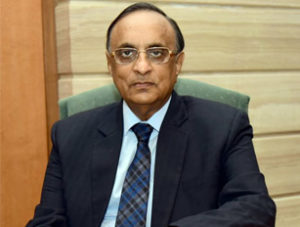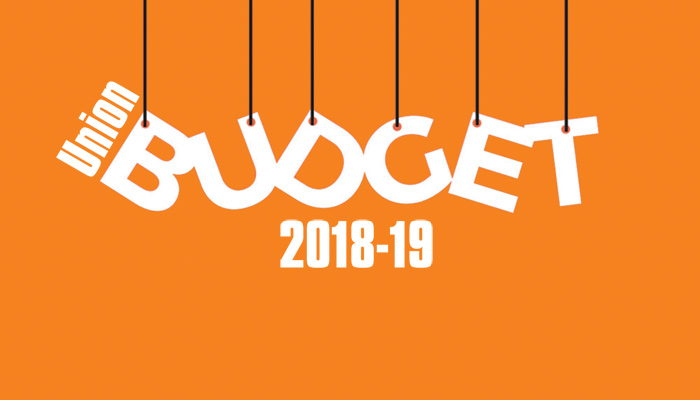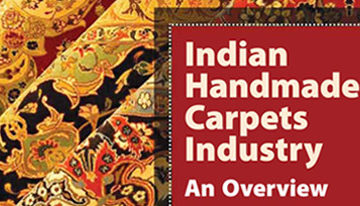The much-awaited Union Budget 2018-19, was presented by the Union Finance Minister of India, Arun Jaitely in the Parliament recently. Textile industry was hoping for some good announcements as this sector is claimed to be the most affected ones due to Demonetization and GST implementation and the Budget has not disappointed them. In fact many of textiles associations heads in India have termed this year’s Budget as positive, pragmatic, and growth oriented for the industry but some have shown their dissatisfaction over the same.
Budget allocations for Handlooms.
Compared to last year’s Rs. 604 cr in the budget to Rs. 386.09 c in the recently announced 2018-19 one, it spells a doom to an already ailing industry. In fact it is the lowest in the history of budget allocations to this sector so far. The maximum chunk of the allocation in the upcoming fiscal went to the National handloom development programme at Rs. 137.37 cr and yarn supply scheme getting Rs. 15 cr.
Other beneficiaries are textile infrastructure getting Rs. 2222.81 cr that stood Rs. 291.37 cr above that in fiscal 2017-2018, Research and capacity building getting Rs. 252.09 against Rs. 150.20 in the current fiscal. Most of the research and capacity building fund has been dedicated to areas like export promotion studies, National Institute of Fashion Technology (NIFT), Grants to AEPC (Apparel Export Promotion Council) Technology Mission on cotton and knitwear. The North East Textile Promotion Scheme gets Rs. 7068.36 in the upcoming fiscal.
Given below are the reactions of the leading textile associations in India over the same.

OP Prahladka Chairman Export Promotion Council for Handicrafts
Hon’ble Union Minister of Finance, Arun Jaitley announced the Union Budget for the year 2018-19. No specific announcement was made with respect to handicrafts sector. However, there are certain measures which will impact the handicrafts sector include allocation of Rs. 7,148 cr for textiles sector; Corporate Tax of 25 per cent for MSME companies; credit support, capital and interest subsidy and innovations to MSME sector.
The Budget did not offer any specific scheme pertaining to handicrafts sector but initiatives towards encouraging growth in MSME sector, development of National Logistics portal as a single window online market, package for textiles sector and restructuring the Bamboo mission would benefit the exports sector from North Eastern Region in the longer run. Prahladka, also expressed that handicrafts sector shall also be provided relief on account of Remission of State Levies [ROSL] wherein Rs. 1,663.85 cr allocated for Textile sector as there are several components such as levies on petroleum products, diesel etc. and SGST on supply by unregistered dealer goes into the production of handicraft products and its levies are not being refunded through the present mechanism.

Ganesh Kr Gupta President Federation of Indian Exporters Organisation
It’s a balanced Budget for the country aiming at inclusive growth and transforming rural India. The focus of the Budget is on agriculture, rural economy, infrastructure, MSME and exports. The target to take agri-exports from $30 bn to $100 bn is very encouraging as agriexports would be instrumental in doubling farmers’ income. A stable Agri Export Policy based on digitalized current stock position, scientific forecasting of crop prospects, current demand would help in devising such a policy. The backward and forward linkages in agriculture through logistics and supply chain would be required to meet such targets. The state-of-art facility in 42 mega Food Park will unleash the potential of food processing exports.
The increased allocation from Rs. 1,100 cr to Rs. 2,000 cr for the Interest Equalization Scheme (IES) for the current year and Rs. 2,500 cr for 2018-19 would help the export sector as it gives cushion to include merchant exporters and services exporters also for the benefit of IES. Similarly, enhanced allocation for Remission of State Levies (ROSL) from Rs. 1,555 cr to Rs. 1,855 cr for the current fiscal and Rs. 2,164 cr for the subsequent fiscal will not only help in clearing the backlog but could also be used to extend the benefit to carpets, handicrafts and fabrics & yarn exports. Extension of fix term employment facility for all sectors will benefit the exporters who were demanding it for long. It will allow them to provide additional jobs as and when they get export orders particularly in sectors where the demand is seasonal in nature.
The Budget has also provided a boost to logistics sector which will help in imparting competitiveness to exports. Increasing allocation for railways, roads, shipping and coastal navigation, electronic payment facility at all toll gates, single logistics portal to meet all logistics requirement will go a long way in reducing the logistics cost of exports. The reduction in the Corporate Tax rate will help the US subsidiaries to continue their operation in the country besides revisiting on this issue by those who were exploring the option to set up further production base in US to avail lower Corporate Tax benefit.
15 per cent growth in exports is very much on the card as global trade is booming supported by buoyancy in commodities. However, a volume-wise growth would pose some challenge due to appreciation of Indian Rupee, liquidity crunch and increasing protectionism across the globe.

P Nataraj Chairman The Southern India Mills’ Association
The scheme for MSMEs to address the issues relating to NPA norms and stressed assets is a welcome step, as it has been a long pending demand from the industry. Extension of 12 per cent EPF employer’s contribution for the first three years of employment and also the fixed term employment for all the sectors of the industry would encourage job creation in the textile industry.
More than 80 per cent of the textile units would benefit due to the reduced corporate tax rate for units having up to Rs. 250 cr annual turnover. This would help them to plough back the amount for creating additional jobs and value addition. The Union budget has allocated Rs. 2,164 cr for Remission of State Levies (RoSL) as against Rs. 1,855 cr allotted last year for exports of garments and madeups. This amount is inadequate as there is huge backlog even for the year 2017. Timely disbursement of government dues is very much essential to ensure adequacy in working capital and achieve a sustained growth rate in exports and job creation.

Ujwal R Lahoti Chairman The Cotton Textiles Export Promotion Council
The Budget is pragmatic, growthoriented and all inclusive. The government had approved a comprehensive textile sector package of Rs. 6,000 cr to boost the apparel and madeup segments. The Budget has provided an outlay of Rs. 7,148 cr for the textile sector in 2018-19. I hope that the increased funds allocated for the textile sector will cover fabrics also under the rebate on state levies (ROSL) scheme.
The government will contribute 12 per cent of the wages of the new employees in the EPF for all the sectors for next three years, which could boost hiring in the apparel sector. Also, the facility of fixed-term employment will be extended to all sectors. The Budget has increased the funds allocation under the TUF scheme from Rs. 2,013 cr in 2017-18 to Rs. 2,300 for 2018-19. This is a positive step and will help in clearing some of the committed liabilities under the TUF scheme. The reduced income tax rate of 25 per cent allowed to companies who have reported turnover up to Rs. 250 cr in the financial year 2016-17 will greatly benefits the micro, small and medium enterprises.

Sanjay Jain Chairman Confederation of Indian Textile Industry
We welcome the budgetary allocation for textile sector of Rs. 7,148 cr in the Union Budget 2018-19 and the announcements pertaining to the MSME sector. However, it is a big disappointment for the industry that its recommendations to increase import duty across the value chain have not been addressed.
Basic custom duty (BCD) on silk fabric has been increased to 20 per cent from 10 per cent. This would save the industry from dumping from China. The industry is facing higher imports post GST across the value added segment and was seeking increase in BCD across yarn and fabric, hence, disappointed with this partial measure. The minimum support price (MSP) of all crops is to be made 1.5 times that of the production cost. This will benefit cotton farmers, but will result in high inflation for the consumers (as cotton constitutes 70 per cent of the consumption) and the downstream segments. This would also make our industry uncompetitive internationally.






